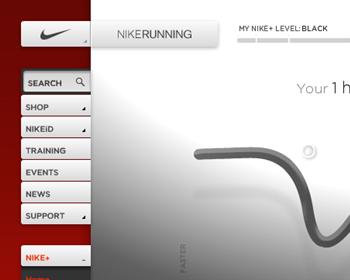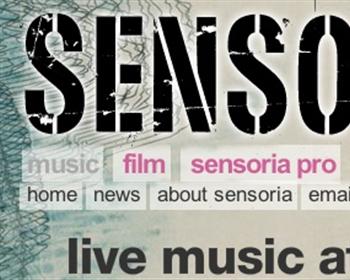Is the Macintosh still the cream of the crop for the budding (or established) creative?
The Mac’s history has been chequered to say the least. After all its not been all beer and skittles and some forget that prior to the return of Steve Jobs and the introduction of the iMac the Cupertino based firm was on the verge of disaster.
It’s a different story now of course, 2008 sees the company in rude health with a powerful slice of the laptop market to its name not mention its recent diversification with the iPhone and of course who can possibly forget the global phenomenon that is the iPod.
Some feel that despite the increasing levels of success Apple’s dedication to its own computer platform isn’t necessarily as strong as it should be. You might wonder how people can say this, after all let’s look at what being an Apple owner brings you.
On the software front out of the box Apple offers the user a comprehensive suite of software that allows the user to tinker with audio and film (Garageband and iMovie). In the last few years Apple have also acquired eMagic, the creators of the industry standard sequencing package Logic (complete with a move that mercilessly cut development of the PC version of the software).
There has also been the previously unprecedented move of shifting the entire Mac platform from Motorola’s G5 processors to the Intel platform. A move that has brought Apple to greater mainstream attention and of course allowed their machines to natively run Microsoft Windows. Also there is operating system OS X, Apple’s next generation platform that opened up new boundaries of aesthetic design and stability.
So, you might be thinking by now…what exactly is my point.
Well, I was watching a demonstration last week at Sensoria of the Mac in full flow, the Mac in question (a relatively recent Macbook for those interested) was involved in some relatively basic film and music editing. The results looked and sounded good but the one contentious point that I witnessed was just how much the machine was struggling to perform its tasks.
The machine was running iMovie and Logic, granted both heavy duty applications yet both are Apple native, in many ways they are designed to compliment each other. Unfortunately in this instance that was sadly not the case, the “spinning beach ball of death” which signifies the machine is tied up in the processing department looks even more prominent when its on a giant screen in a crowded hall.
Now before the Mac fanatics land in my garden armed with burning torches proclaiming me a witch for my nay saying practices, let me enlighten you on a few things. First things first, I’ve been a dyed in the wool Mac user since the early nineties. I’ve bought into their products with the best of them whether it is the old G3 tower (which I still use for aspects of composition/music work) or the faithful Newton that I bought when nobody else did (forget the geek jokes it was just ahead of its time).
There could be many reasons why the laptop in question functioned poorly, and I’m not saying it’s necessarily the machine’s fault. However it did bring to mind some of my more frustrating experiences with Apple technology of late.
The Mac has never been perfect but it was for a good time strangely immune to a lot of the issues that have plagued the Windows community. On paper in the old days the Mac might not have been quite as sprightly as the PC’s it competed against but it was sure as hell a lot more stable and less prone to all the difficulties involved in owning a PC.
Yet now since the unification of the platform under the Intel banner I can’t honestly vouch for the Mac in the same way I did. Since the inception of Leopard things have got a little more difficult for the creative individual. There have been issues with generally stability and performance. Creative applications such as iMovie have suffered with faults (refusing to load being a common one) and in one instance Cubase the sequencer that in many ways is the backbone of what I do has been rendered useless by this latest upgrade (it’s a known issue, the older versions of Cubase SX simply don’t play well with Leopard). No quick fix or patch either, because I’m a couple of versions behind the latest I’m being asked to fork out for yet another upgrade. Either that or make the shift from Apple’s main competitor, convenient eh?
In terms of my main work machine I managed to squeeze a good ten years out of its predecessor before obsolescence beckoned and I was forced to upgrade. Considering the outlay I don’t doubt the machine paid for itself. I paid roughly the same amount ten years later and four years in the machine is showing signs that it will not go anywhere near that distance.
In comparison I find that a lot of the problems that I encounter are more common on my desktop machine which still uses Apple’s old G5 chipset whereas anything Intel based and therefore newer seems to function without any problem. It’s purely my opinion of course but I can’t help but feel Apple is in someway putting the squeeze on some of the users of its older equipment. After all it would make life a hell of a lot easier if their entire user base were united under one chip. So whereas things tend to work pretty well on the Intel side of things, those using older equipment don’t always find the road quite as smooth. Somehow I don’t think things are going to change any time soon either.
Its an annoyance to say the least, and a rather costly one at that. Yet what are my alternatives as a musician. On the Windows side of the fence things aren’t much better. While in hardware terms everyone is now more or less singing from the same hymn sheet (the megahertz race of old is well and truly over) Microsoft’s camp now lacks the musical armoury of Logic and while it may have Cubase which I have always considered to be a worthy piece of software at the end of the day there are still plenty of issues with Vista to contend with as it attempts to garner marketplace maturity.
Linux exists of course, and now there are some very user friendly builds on offer that cost nothing and run on, well pretty much anything (Ubuntu and Mint variations are worth a look if you’re wanting to slap something on an old PC or Mac for that matter). However from the musician’s perspective the programs on offer are a little on the experimental side for everyday use. Don’t get me wrong I have seen Linux machines gigged on the electronica circuit but from what I have seen you don’t so much play your music into them, you pretty much program them in a rather dry numerical fashion. I strongly suspect this will change given enough time though.
So for now it looks like despite my whingeing I’m going to stay pretty much where I am. A Mac user who despite enjoying all the boons of the platform is going to endure some of its shortfalls as well, time to start shopping for a new sequencer methinks…


